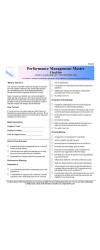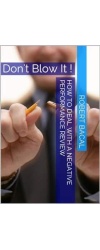Avoiding Overly Positive and Overly Negative Communication
The Sweet Spot Between Overly Positive and Overly Negative Communication: Glass Empty, Glass Full
You’ve heard the phrase: “There’s two kinds of people. Those that see the glass as half full, and those half empty”. It’s a folksy attempt to identify that people have patterns of behavior, to be either critical or optimistic.
The subtle implication is that there is something “wrong” with people with a negative bias — those that see the glass as half empty.
In fact, people who have a tendency to see the glass as half full or half empty bring to the table value that the “other” bias holding person won’t.
For example, the half empty person may be perfect in anaysing and finding flaws in plans, but not so good at the rah, rah, ataboy morale building stuff.
The glass half full person tends to be more supportive, but may support decisions and plans that are bad ideas from the start.
But none of that is hugely problematic provided people aren’t extreme. Calling a glass full, when it’s empty, or calling an empty glass full IS a problem, particularly if the individual does this as a consistent pattern.
Empty Glass Full, Full Glass Empty
Full Glass Empty
You’d think that a person, seeing a full glass of water, would have to be lying about his perceptions if he told you it was empty. Not true.
Some people are so negative in their thinking about what is set in front of them that they can see only the flaws. Whether it’s a desire to enhance their own standing, or their egos or even regardless of why, these people communicate almost solely in the “Whatever It Is, I’m Against It”.
Often it’s not malevolent. Sometimes it can be. It’s often not personal, though it can be that too. It IS obstructive, particularly when:
- there’s a pattern of criticism that is never accompanied by identifying positive aspects of what’s “in the glass”.
- there’s no effort at suggesting a better alternative, or their own plan or course of action.
The Full Glass Empty person throws rocks from the outside, and doesn’t enter into the problem space. Neither does he have an interest in solving the problem or addressing the issue.
You see this all the time on social media, where particular people snipe at ideas presented, but never actually suggest ideas or solutions of their own. It’s easier that way. But it also obstructs others, particularly in the work environment.
Empty Glass Full
At the other end of the spectrum is the person who looks intently at an empty glass and tries to convince people that it’s really full. Never mind that there is no actual evidence to support that the glass if full. Never mind that nothing is perfect.
Empty Glass Full people aren’t trying to deceive. They are oriented towards a desire to please, to appear positive, and in fact, may lack the ability to critically assess positions, plans, or ideas. They fall back on the “Oh, that’s good” perspective, and in the extreme cases can actually support two contradictory positions at once.
You find these people on social media too. (Social media is such a great laboratory for understanding how people communicate). You also find them in the workplace, although they tend to be less noticed and found objectionable than the Full Glass Empty folks, because they are just so darned pleasant.
Pleasant, indeed, but…well, useless when it comes to accomplishing things, because you can’t rely on them to provide accurate feedback and critical thinking, let alone solutions.
So, What?
Here are just a few of the implications of these patterns of behavior, both to the individual falling into one or the other habitually, and to those around him or her.
- Opinions and “contributions” from those at the extremes will become devalued, and people will turn off, and stop listening. Extremes end up ignored, because, regardless of the details, everyone has heard the same litany before.
- Whether in real life or social media, people will stop interacting and engaging, because in the end, extremes aren’t saying anything useful, or offering ideas to make something better.
The Full Glass Empty folks will, however attract others with a similar style, who are glad to join in the rant, complaint, or “it sucks” conversation. That reinforces the tendency to be negative, of course. - At work, Full Glass Empty people are unlikely to get promoted, because others will conclude that they lack people skills (which may or may not be true). The real problem is that they aren’t problem solvers. They are problem seekers, and quite vocal about the problems they find.
- Also at work, there’s a danger that the Empty Glass Full people will be seen as pleasant, but also vacuous, unintelligent. People oriented towards making things better (i.e. problem solvers) will find the constant positive thinking, and the lack of critical thinking, tiresome, and even distracting.
- Generally speaking, both extremes end up losing credibility. Not only do others tire of the same old schtick, but it’s so very obvious that the glass IS empty (or full) and that the extremes are absolutely wrong (or lying) about what they see, that they tend to marginalize themselves.
- Oddly enough, an Empty Glass Full person who spends his or her time congratulating others, regardless of what they say, is probably going to be quite successful. There’s Twitter research that shows that positive tweets are much more likely to be retweeted, for example.
Reining In Your Extreme Tendencies
If you are one extreme or the other, you don’t necessarily have to become the opposite. Your task is to move towards the middle. By doing that, you’ll become more valuable to those around you, and people will start seeing you as a reliable, credible source of commentary or information. Your credibility will increase.
- First, you need to become aware of your position on the continuum. Monitor your comments, whether it’s online or at work (or home). Are they mostly negative, or mostly positive?
Our self-perceptions are often skewed. So it’s useful, in fact essential to look to the reactions of others.
- Ask. Whether at home, work or online, ask people you trust to give you feedback. “Did you find my comments overly negative?” “Do you think people are tired of my pats on the back?”
Pay attention to the answers, and ask people who tend to be the opposite of you. - Observe. When you speak (or write), take a look at how people are reacting to what you say. We often don’t do that, particularly when we talk. Are they looking bored, a symptom of their having “heard it all” before from you? Are they engaging with you in balanced ways, neither overly positive or negative?
- For the more negative people out there, the patterns for how people respond are different. Negative people will either attract those that are also negative, OR they will attract people who will want to point out how unreal the negativity is. So, you may get a lot of arguments simply based on the style, or your own pattern. That’s because people will stop listening to your criticisms, much like the boy who cried wolf.
Remember
If all you do is praise others, eventually your positive feedback may start to be devalued, because you will appear to praise anything, and everyone.
If all you do is criticize and find fault, eventually, people stop listening to you because you will start to sound like an old, beat up, stuck record.






